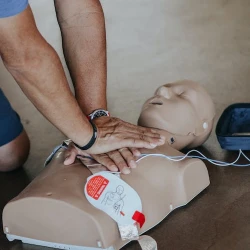The opioid crisis has left no state untouched, but New Hampshire has been particularly hard-hit. Addressing this public health emergency requires a multi-pronged approach, involving everything from law enforcement to healthcare infrastructure to community support. Fortunately, the state has made significant strides in providing effective treatment options to those struggling with opioid addiction. This comprehensive article aims to explore the various avenues of opioid treatment available in New Hampshire.
The Scope of the Problem
To understand the need for effective opioid treatment options, one must first grasp the severity of the opioid crisis in New Hampshire. According to state health department data, New Hampshire has one of the highest opioid overdose death rates in the country. This grim statistic underscores the urgency for robust, effective, and easily accessible treatment solutions.
The opioid crisis in New Hampshire is a deeply concerning public health issue that has been escalating over the past few years. According to data from the Centers for Disease Control and Prevention (CDC), New Hampshire ranks among the states with the highest rates of drug overdose deaths, a majority of which are opioid-related. In fact, in some years, the state has had an opioid overdose death rate that is almost twice the national average.
This alarming situation is not just a statistic; it translates into real-life tragedies affecting families, communities, and the healthcare system. Emergency rooms and first responders are increasingly burdened with overdose cases, making it challenging to manage other medical emergencies effectively. The ripple effects of the crisis also extend to child welfare systems, as more children are being placed in foster care due to parental substance abuse. Furthermore, the burden on the state's criminal justice system is notable, with increased arrests and incarceration rates related to opioid offenses.
The demographic scope is also wide-ranging, affecting individuals regardless of age, gender, ethnicity, or socio-economic status. However, certain vulnerable groups like veterans, the homeless, and those with preexisting mental health conditions appear to be disproportionately affected.
The social and economic costs of the opioid crisis in New Hampshire are immense. From lost productivity and employment to increased healthcare expenditures, the crisis is draining valuable resources that could be deployed for other vital public services.
Economically, the state has been hit hard by the crisis. Employers face challenges in maintaining a healthy workforce, and productivity losses further strain the economy. The healthcare costs, including those related to emergency medical services, hospitalizations, and long-term treatments, add millions of dollars to the state's expenditure each year.
One of the most heart-wrenching aspects of the scope of this problem is the lost potential of the individuals affected. Young adults who should be in the prime of their lives building careers and families are instead caught in the grip of addiction, and older adults find their lives irrevocably altered, sometimes after being initially prescribed opioids for chronic pain conditions.
Given this broad and devastating impact, the urgency for effective and accessible treatment options cannot be overstated. New Hampshire has been responding proactively, but the scope of the problem necessitates sustained, multi-pronged efforts from all stakeholders involved.
This broad overview of the problem underscores the imperative for a robust, comprehensive, and adaptive opioid treatment strategy that is sensitive to the complex and multifaceted nature of the opioid crisis in New Hampshire.
Legislation and Policy Measures
Before delving into treatment options, it's crucial to highlight the role of legislation in shaping opioid treatment in the state. New Hampshire has passed multiple laws aimed at enhancing access to treatment, including insurance coverage mandates for opioid use disorder treatments and the expansion of telemedicine services for substance abuse counseling. These laws serve as a framework within which treatment services can flourish.
- Opioid Task FOrce of the NH Governor's Commission FAQ
- New Hampshire Board of Medicine Statement on House Bill 271
Medication-Assisted Treatment (MAT)
One of the most effective and recommended forms of treatment for opioid use disorder is Medication-Assisted Treatment (MAT). MAT combines behavioral therapy with medications like Methadone, Buprenorphine, and Naltrexone to help individuals manage cravings and withdrawal symptoms.
Methadone Clinics
Methadone clinics are one of the oldest and most established forms of MAT. These clinics are tightly regulated but offer a proven effective treatment method. Methadone acts as a stabilizer, minimizing the euphoric highs and devastating lows associated with opioid abuse.
Naltrexone Treatments
Unlike Methadone and Buprenorphine, which are opioids themselves, Naltrexone is an opioid antagonist. It blocks the effects of opioids, removing the potential for a euphoric high. This medication is often best for those who have already undergone detoxification.
Behavioral Therapies
While medications can be effective in treating the physical symptoms of addiction, behavioral therapies address the psychological aspects. Cognitive Behavioral Therapy (CBT) and Contingency Management are among the most popular approaches.
Cognitive Behavioral Therapy (CBT)
CBT focuses on helping individuals understand the triggers and thought patterns that lead to substance abuse. By recognizing these triggers, individuals can learn to respond in healthier ways.
Contingency Management
This method involves offering tangible rewards for positive behaviors like abstinence. Though somewhat controversial, it has shown effectiveness in some studies.
Integrated Treatment Programs
For many, a combination of medication and behavioral therapy proves most effective. Integrated treatment programs offer a comprehensive approach, treating not just the addiction itself but also any co-occurring mental health disorders.
Access Points: Doorways Initiative
In New Hampshire, the Doorways Initiative serves as a critical entry point for those seeking treatment. Anyone in need can walk into a Doorway location, where they will be assessed and directed to appropriate services, whether that’s immediate stabilization or long-term treatment.
Telemedicine: Breaking Down Barriers
New Hampshire has been quick to adopt telemedicine services for substance abuse treatment, offering a lifeline to those in remote areas. Online counseling and digital prescriptions for MAT have made treatment more accessible than ever.
Community Support
Community organizations play a vital role in treatment. Support groups like Narcotics Anonymous (NA) and SMART Recovery offer peer-led support, while family-focused organizations provide education and support to loved ones.
Harm Reduction Measures
Apart from treatment for addiction, harm reduction measures like the distribution of Naloxone kits for overdose reversal and needle exchange programs are also critical components of New Hampshire’s multi-faceted approach to tackling the opioid crisis.
The Road Ahead
While significant progress has been made, challenges remain. More funding is needed to expand services, and ongoing research is critical to adapt and evolve treatment options.
Conclusion
New Hampshire’s response to the opioid crisis is multi-dimensional, ranging from robust legislation to innovative treatment options. By adopting a multifaceted approach, the state aims to offer a path to recovery for everyone affected by opioid addiction.





